history reprints from VistaBooks
with Thomas Moran illustrations
Scroll down for Biography of Thomas Moran from Wikipedia, the free encyclopedia; June 24, 2023.
See Wikipedia for links removed here.
Thomas Moran |
|---|

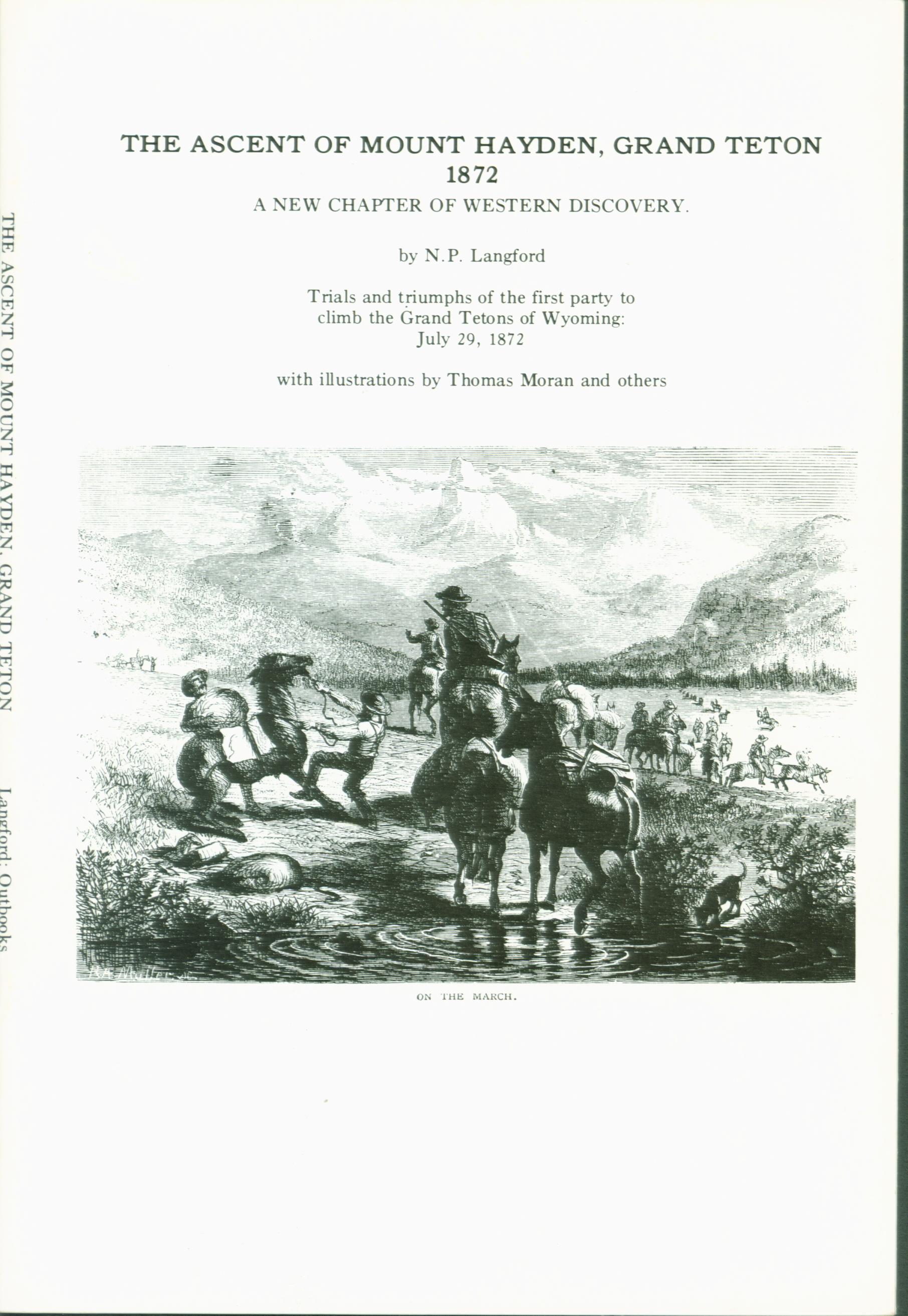
The Ascent of Mount Hayden, Grand Teton, 1872: a new chapter of Western Discovery.
by Nathaniel Pitt Langford.
Trials and triumphs of the first party to climb the Grand Tetons of Wyoming, July 29, 1872. Author Langford was among the early explorers of the Yellowstone/Teton region and was first superintendent of Yellowstone National Park. His claim to a first ascent of the Grand Teton has been challenged by later parties, and former park naturalist McCurdy considers the various claims in the editor's preface. But regardless, the account still gives a fine record of what mountain climbing was like in the early days in this region. Reprint from Scribner's Monthly. Illustrations from Thomas Moran and others, 24 pages. See sample pages, illustrations,[including all Thomas Moran illustrations from "The Ascent of Mount Hayden..."to be added].
ISBN-10: 0-89646-066-5. ISBN-13: 978-0-89646-066-9. Order #: VIST0066 paper$4.95.
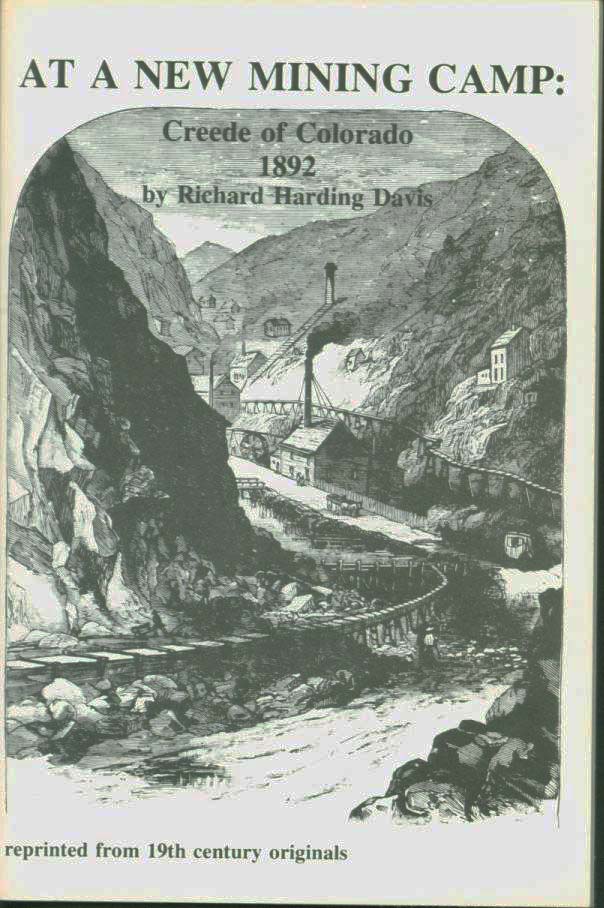
At a New Mining Camp: Creede of Colorado, 1892.
by Richard Harding Davis.
Today Creede is a "ghost" town in southwestern Colorado (the italics because today's residents don't like being called ghosts), a remnant of its former size and glory. But author Davis reports it when activity there seemed circus-like. At the1892 time Creede was growing rapidly to a population of 8,000. The town was rip-roaring, and this account helps us understand the bustle as well as the unbounded hope and optimism at the site of a new mining boom. Reprinted from 19th century originals. Period illustrations, (page 17 "Water Wheel Gap" by Thomas Moran. 32 little pages. See sample pages, illustrations, [including all Thomas Moran llustrations from At a New Mining Camp: Creede of Colorado, 1892" to be added].
ISBN-10: 0-89646-018-5. ISBN-13: 978-0-89646-018-8. Order #: VIST0018 paper$4.95.

The Cañons of the Colorado--the 1869 discovery voyage down the Colorado River.
by Major John Wesley Powell.
Note the word ca�ons in the title would today be spelled canyons. From Wyoming, into Colorado, through Utah, to Arizona and the Grand Canyon, and to Nevada--this was the journey of the "Colorado River Exploring Expedition", what Powell called his group of 9 men and 4 boats as they began charting what was the last major unexplored part of the then United States. The trip was not only scientific in its goals, but it naturally became a grand adventure, with two of their party opting to leave the expedition before attempting a furious cascade, only to be killed by Indians. Much of the land and scenery which they drifted or dashed past is today included in national park areas. Illustrations are by Thomas Moran and and others. 64 pages. See sample pages, illustrations,[including all Thoms Moran illustrations from "The Canons of the Colorado..." to be added].SBN-10: 0-89646-059-2. ISBN-13: 978-0-89646-059-1. Order #: VIST0059 paper$6.95.
SAVE! Scuffed copies of The Cañons of the Colorado are available at discount: Go to Scuffed Specials.
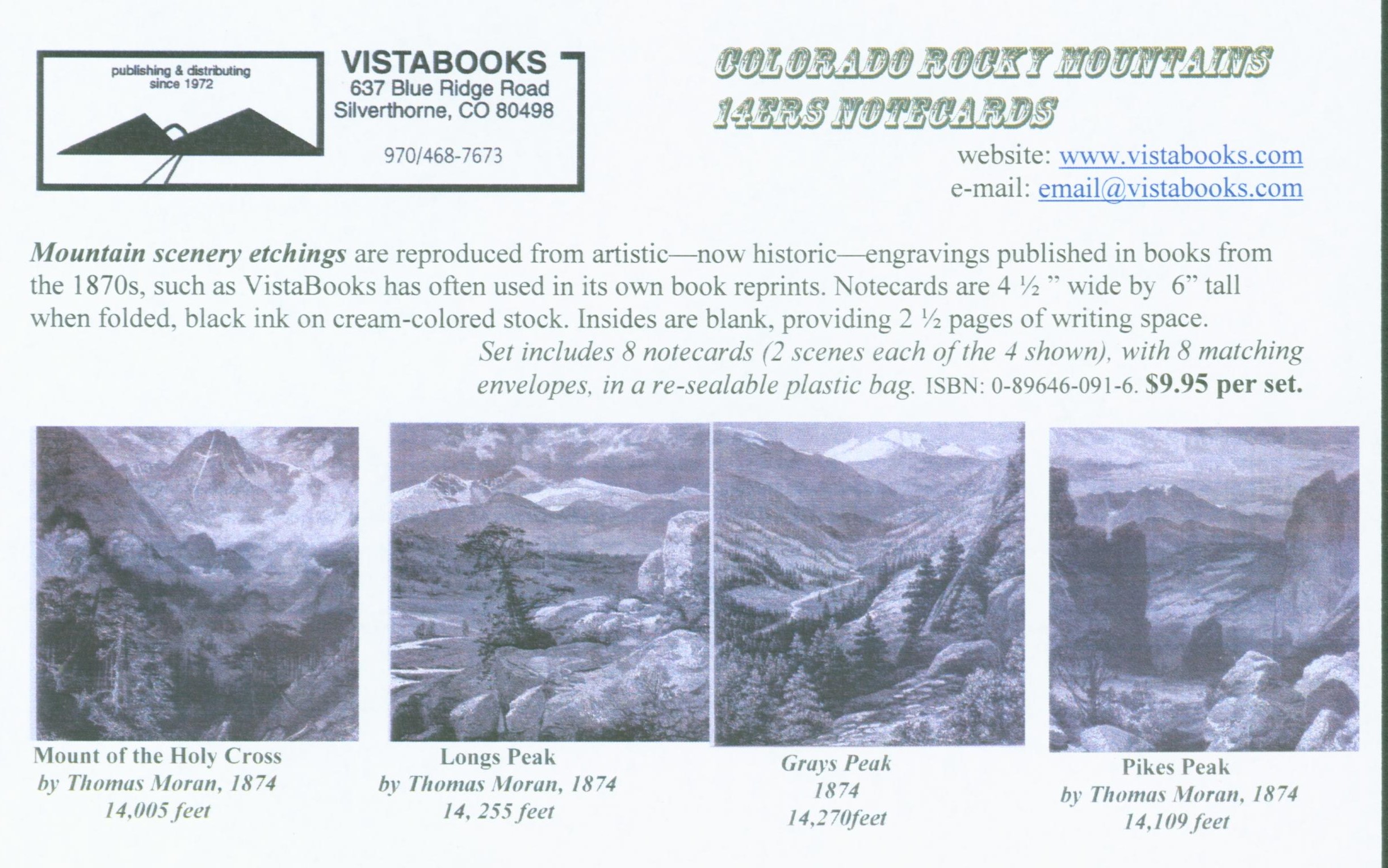 Colorado/Rocky Mountains 14ers notecards.
Colorado/Rocky Mountains 14ers notecards.
byThomas Moran, 19th century landscape painter.
Includes scenes of Mountain of the Holy Cross, Pike's Peak, and Long's Peak--all 1874 by Moran, plus Gray's Peak, 1874. 2 scenes each on antique white paper with 8 matching envelopes. See sample pages, illustrations.
ISBN: 0-89646-091-6. Order #: VIST0091 notecard$12.95.
 Donner/Tahoe Sierra notecards.
Donner/Tahoe Sierra notecards.
by Thomas Moran, 19th century landscape painter.
Views from early California of Donner Lake, Lake Tahoe, and Summit of the Sierras--all by Moran, plus Eagle Falls above Emerald Bay. 2 scenes each from lithographs, with 8 envelopes; antique white stock. See sample pages, illustrations.
ISBN: 0-89646-092-4. Order #: VIST0092 notecard$12.95.
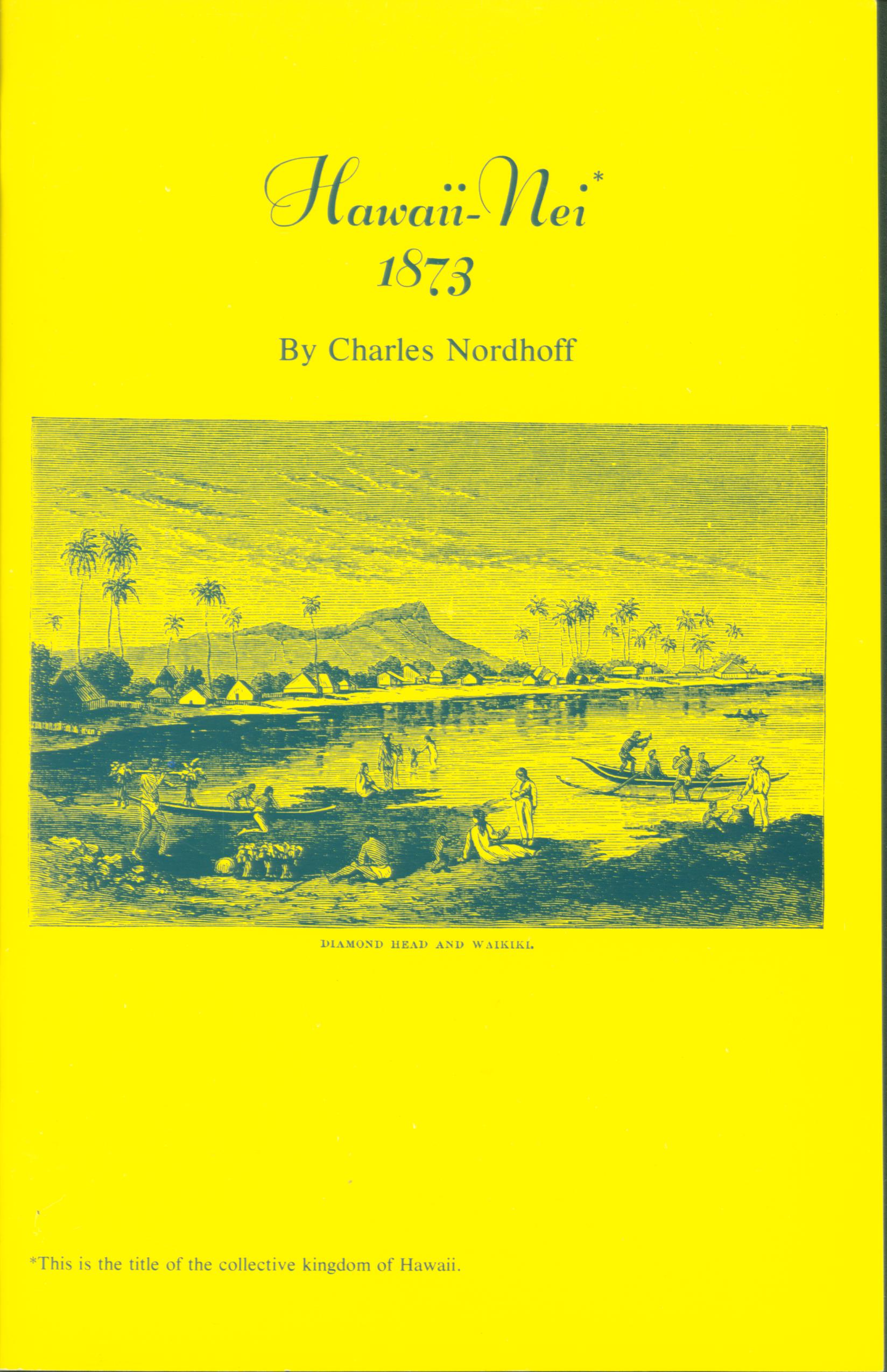 Hawaii-Nei, 1873.
Hawaii-Nei, 1873.
by Charles Nordhoff.
Hawaii-Nei is the name for the collective kingdom of Hawaii, and these two articles from over a century ago tell of the islands' history and people, rains, and volcanic eruptions. The islands were still relatively native and natural during our author's visit, and he tells of their traits and early religion. Foreword is by Russell Apple, Pacific Historian of the National Park Service. Engravings--including some by Thomas Moran--show the land, the seascapes, homes, public buildings, and the people--eating poi, dancing the hula, surfing. 40 pages. See sample pages, illustrations, [including all Thomas Moran illustrations from "Hawaii--Nei" to be added].
ISBN-10: 0-89646-030-4. ISBN-13: 978-0-89646-030-0. Order #: VIST0030 paper$4.95.

In the Heart of the California Alps: a near view of the High Sierra in 1872... account of the first ascent of Mount Ritter.
by John Muir.
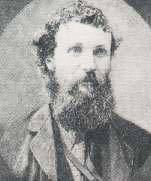 portrait of John Muir, conservationist, naturalist, writer,
mountaineer
portrait of John Muir, conservationist, naturalist, writer,
mountaineer
Account of the first ascent of Mount Ritter, October, 1872. Record of one of Muir's finest
mountain rambles and of the first ascent, a solo one, of this mountain in the Mammoth
Lakes country of the eastern Sierra Nevada. Combines natural observations with the
adventures and philosophical musings of a nearly fatal climb. Made from a base camp with
three artists who were left sketching on the Lyell Fork of the Tuolumne River late in the season, while Muir ventured into the Minaret country, in 1890 a part of Yosemite National Park but now in the Ansel Adams Wilderness of Inyo National Forest, near Mammoth, California. Three
illustrations of Mount Ritter and its region by one of these artists, William Keith, are included. (Keith became an eminent landscape painter, producing many scenes of the West including the Sierra, Yosemite Valley, Mount Shasta, the San Francisco Bay region, and more.) Drawings
by Muir are also included, as well as other period illustrations. Foreword by former
Yosemite Chief Park Naturalist William R Jones. 24 pages. See sample pages, illustrations.
ISBN-10: 0-89646-026-6. ISBN-13: 978-0-89646-026-3. Order #: VIST0026 paper$4.95.
KEITH AND MUIR:
William Keith (from St Mary's College of California website):
"A 19th-century leading artist and visionary in San Francisco, William Keith (1838-1911) is most known for his impact on preserving and sharing the California landscape through paint and brush. Saint Mary's College Museum of Art cares for the most comprehensive body of work created by this California Master Landscape Painter.
Keith arrived at Muir's cabin in Yosemite Valley with a letter of introduction in 1872, and a lifelong friendship quickly developed. The two Scottish immigrants took camping trips together in the High Sierra, saw each other when Muir was in San Francisco and helped inspire each other's work. The idea for the Sierra Club was first formed in Keith's studio during conversations with Muir, Dr. Joseph LeConte, the first president of the University of California, and Warren Olney, a prominent San Francisco attorney. Muir's concern with scientific accuracy reinforced Keith's early training as a wood engraver in encouraging him to reproduce the exact topography and details of a landscape early in his career. Keith had also already expressed a preference by 1870 to "study altogether from Nature," reflecting in part the admonishments of the influential writer John Ruskin."
ISBN-10: 0-89646-026-6. ISBN-13: 978-0-89646-026-3. Order #: VIST0026 paper$3.95.

Silver San Juan: the mines and high scenery in Colorado's southwest mountains--in 1882.
by Ernest Ingersoll.
Presents early sketches of this region where the Colorado Rocky Mountains culminate in their grandest scenic display, including Silverton, Rico, Animas Canyon, Capitol City, Lake City. Although mines and mining are the prime topic in this early history, and the writing gives a good picture of mining in the mountain West, the author admired the landscapes greatly, too. It was a time for that in America, when national pride in Western grandeur was swelling. Silver San Juan was a great place for such pride, for the region has been called "The Switzerland of America". Most of the region's minerals have now been removed, but the economic input from that source is replaced by tourists who come enthusiastically in numbers. For those who want to know the background of the region they visit, this book is for them. Reprinted from 1882. Illustrations by Thomas Moran and others. 24 pages. See sample pages, illustrations, [including all Thomas Moran illustrations from "Silver San Juan" to be added]..
ISBN-10: 0-89646-025-8. ISBN-13: 978-0-89646-025-6. Order #: VIST0025 paper$4.95.
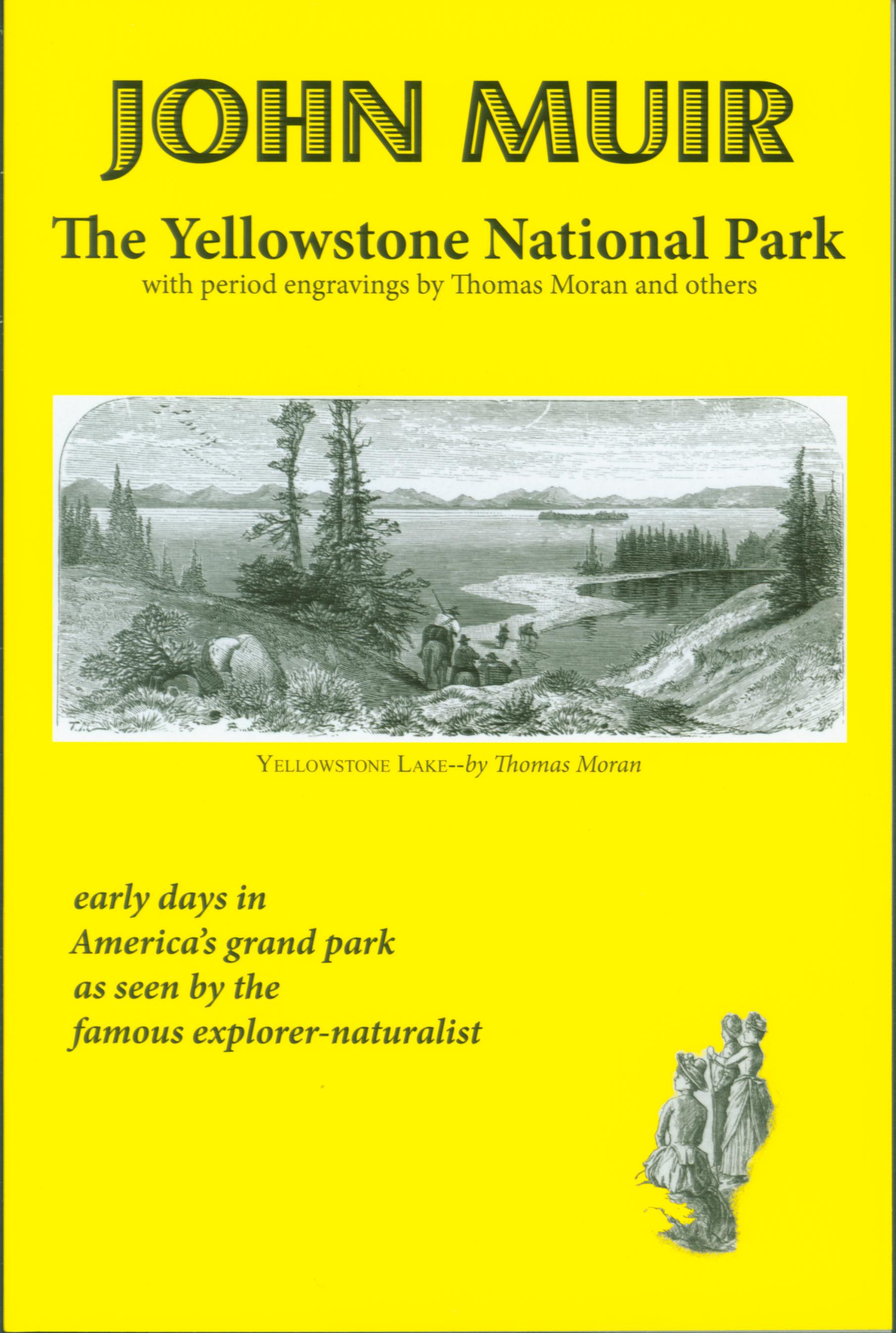
The Yellowstone National Park.
by John Muir.
Here is what may well be Muir's most literary piece of nature writing, inspired not by
the Sierra Nevada he was more familiar with, but by the wonders of the Yellowstone region.
The text tells of the park's geysers, lakes, mountains, animals, flowers and trees,
petrified forest--of the "blessed old Yellowstone Wonderland." It is the source
for his oft-quoted phrase:
"Climb the mountains and get their good tidings.
Nature's
peace will flow into you as sunshine flows into trees.
The winds will blow their own
freshness into you,
and the storms their energy, while cares will drop off like autumn
leaves."
Tips on how to travel in the park around the turn-of the-century are
included!
Illustrated with drawings and engravings by Thomas Moran and others.80 pages, 6 x 9, coated stock. See sample pages, illustrations,[including all Thomas Moran illustrations from "The Yellowstone National Park" to be added]..
ISBN 978-0-89646-101-7. Order Order #: VIST0101 paper$8.95.
Biography of Thomas Moran from Wikipedia, the free encyclopedia; June 24, 2023.
See Wikipedia for links removed here.
Thomas Moran (February 12, 1837 – August 25, 1926) was an American painter and printmaker of the Hudson River School in New York whose work often featured the Rocky Mountains. Moran and his family, wife Mary Nimmo Moran and daughter Ruth took residence in New York where he obtained work as an artist. He was a younger brother of the noted marine artist Edward Moran, with whom he shared a studio. A talented illustrator and exquisite colorist, Thomas Moran was hired as an illustrator at Scribner's Monthly. During the late 1860s, he was appointed the chief illustrator for the magazine, a position that helped him launch his career as one of the premier painters of the American landscape, in particular, the American West.
Moran along with Albert Bierstadt, Thomas Hill, and William Keith [ed.: For a William Keith painting, see In the Heart of the California Alps: a near view of the High Sierra, by John Muir.] are sometimes referred to as belonging to the Rocky Mountain School of landscape painters because of all of the Western landscapes made by this group.
Biography
Moran was born in Bolton, Lancashire, in England, to Mary (née Higson) and Thomas Moran Sr., one of seven children. His father belonged to a family of handloom weavers. He wanted a better future to his family, so they moved to the United States in 1844, when young Thomas was 7 years old. The trip had a life-long impression on Moran, who later created sketches and paintings of the sea. His family first settled in Baltimore, moving afterwards to Kensington, a suburbia of Philadelphia. Moran began his artistic career as a teenage apprentice to the Philadelphia wood-engraving firm Scattergood & Telfer. Moran found the engraving process "tedious"and spent his free time working on his own watercolors. By the mid-1850s he was drawing the firm's illustrations for publication rather than carving them. It was then that he encountered illustrated books that included examples of the work of British artist J. M. W. Turner, who was to be a lasting influence on Moran's work. He also began studying with local painter James Hamilton. Moran traveled to England in 1862 to see Turner's work. From that point on, he emulated Turner's use of color, his choice of landscapes, and was inspired by his explorations in watercolor, a medium for which Turner was particularly well-known. During the 1870s and 1880s, Moran's designs for wood-engraved illustrations appeared in major magazines and gift oriented publications. Although he mastered multiple printing media including wood-engraving, etching, and lithography, which he learned from his brothers, he received renown for his paintings in oil and in watercolor. The height of his career coincided with the popularity of chromolithography, which Moran used to make color prints of his works, so that they could be widely distributed. He was also one of the leaders of the etching revival in the United States and Great Britain.
Grand Canyon of the Colorado River (1892–1908)Moran was married to Scottish born Mary Nimmo Moran (1842–1899), an etcher and landscape painter. The couple had two daughters and a son. His brothers Edward (1829–1901), John (1831–1902) and Peter (1841–1914), as well as his nephews Edward Percy Moran (1862–1935) and Jean Leon Gerome Ferris (1863–1930) were also active as artists. His brother John was also a pioneer in artistic photography. The two often worked side by side, John photographing the same scene that Thomas was painting. He died in Santa Barbara, California on August 25, 1926.
Yellowstone images
Thomas Moran's vision of the Western landscape was critical to the creation of Yellowstone National Park. In 1871 Dr. Ferdinand Hayden, director of the United States Geological Survey, invited Moran, at the request of American financier Jay Cooke, to join Hayden and his expedition team into the unknown Yellowstone region. Hayden was just about to embark on his arduous journey when he received a letter from Cooke presenting Moran as "an artist of Philadelphia of rare genius". Funded by Cooke (the director of the Northern Pacific Railroad), and Scribner's Monthly, a new illustrated magazine, Moran agreed to join the survey team of the Hayden Geological Survey of 1871 in their exploration of the Yellowstone region. During forty days in the wilderness area, Moran visually documented over 30 different sites and produced a diary of the expedition's progress and daily activities. His sketches, along with photographs produced by survey member William Henry Jackson, captured the nation's attention and helped inspire Congress to establish the Yellowstone region as the first national park in 1872. Moran's paintings along with Jackson's photographs revealed the scale and splendor of the beautiful Yellowstone region where written or oral descriptions failed, persuading President Grant and the US Congress that Yellowstone was to be preserved. Moran's impact on Yellowstone was great, but Yellowstone had a significant influence on the artist, too. His first national recognition as an artist, as well as his first large financial success, resulted from his connection with Yellowstone. He even adopted a new signature: T-Y-M, Thomas "Yellowstone" Moran. Just one year after his introduction to the area, Moran captured the imagination of the American public with his first enormous painting of a far-western natural wonder, The Grand Canyon of the Yellowstone, which the government purchased in 1872 for $10,000. For the next two decades, he published his work in various periodicals and created hundreds of large paintings. Among these, The Grand Canyon of the Yellowstone (1872) and Chasm of the Colorado (1873–74) are exhibited at the Department of the Interior Museum.
Over the next forty years Moran traveled extensively. He went back to Yellowstone with Jackson in 1892. They were invited by Elwood Mead, the state engineer of Wyoming, in preparation for a "Wyoming Exhibition" at the World's Columbian Exposition. Thousands of tourists were now able to visit the park, arriving by the Northern Pacific Railway, and Moran and Jackson were able to take advantage of the tourist facilities, such as a hotel at Mammoth Hot Springs. Moran wrote "After a day at Norris we left for the Grand Canyon where we stayed two days and made a great many photos. I saw so much to sketch that I have determined to return there myself after I have been to the Geyser Basins and the lake and spend a week at work there. It is as glorious in color as ever and I was completely carried away by its magnificence. I think I can paint a better picture of it than the old one after I have made my sketches." Moran sketched many more images of the Canyon on this trip than he had in 1871, including views from the viewpoint named for him on the 1871 trip, "Moran Point". The Grand Canyon of the Yellowstone (1893–1901) is on view at the Smithsonian American Art Museum.
Moran was elected to the membership of the National Academy of Design in 1884 and produced numerous works of art in his senior years.
Painting in the White House
Thomas Moran has a painting exhibited as part of the White House collection. In the photograph depicting President Barack Obama and Israeli President Shimon Peres in the Oval Office it is seen on the wall: the portrait of George Washington is between City of Washington from Beyond the Navy Yard (1833) by George Cooke (on the left) and The Three Tetons (1895) by Thomas Moran (on the right). Official White House photo by Pete Souza.
Legacy
The Thomas Moran House in East Hampton, New York is a National Historic Landmark. Mount Moran in the Grand Teton National Park is named for Moran. His work is held in the collection of the Gilcrease Museum in Tulsa, Oklahoma, Cooper-Hewitt, National Design Museum, the Amon Carter Museum of American Art, R. W. Norton Art Gallery, and the Berkshire Museum in Pittsfield, Massachusetts.
End of Wikipedia article.
Moran's work at Yellowstone is abundantly explained in the above, and appropriately as his Yellowstone painting is hung in the nation's capital. While the article notes that Yellowstone was the first national park, an argument has been made that Yosemtie was the first, established in 1864 but initially as a state park under federal authority, yet refrerred to by writers as a national park even prior to 1872 when Yellowstone was established Moran himself wrote this in developing the testimony made to Congress to establish Yellowstone:
"Why will not Congress at once pass a law setting [the Yellowstone] apart as a great public park for all time to come, as has been done with that far inferior wonder, the "Yosemite Valley?"
Moran has been called the father of our national parks as John Muir was also called; Moran for his paintings, Muir for his writings, and both for their activism.
It is also the case that Moran did works on many other national parks and areas, inclding the Grand Canyon of the Colorado River, Colorado's Mountain of the Holy Cross, Lake Tahoe and Donner Lake, Yosemite Valley, Great Salt Lake, maritime sand European scenes.
END OF VISTABOOKS "Thomas Moran" PAGE--click for TOP
This "VistaBooksThomas Moran" page was last modified
March 29, 2025.
Did you come here from a link on another website? For latest version of this
page, click or copy to your browser: https://www.vistabooks.com/themes/vistpubsthom.html. Copyright © 2023 VistaBooks LLC. Need help? email. We want you to find what you want to find.
![]() to VistaBooks Home/Contents or use links in sidebars for other pages
to VistaBooks Home/Contents or use links in sidebars for other pages
to Western Americana
to Frederic Remington
Thanks for looking!

